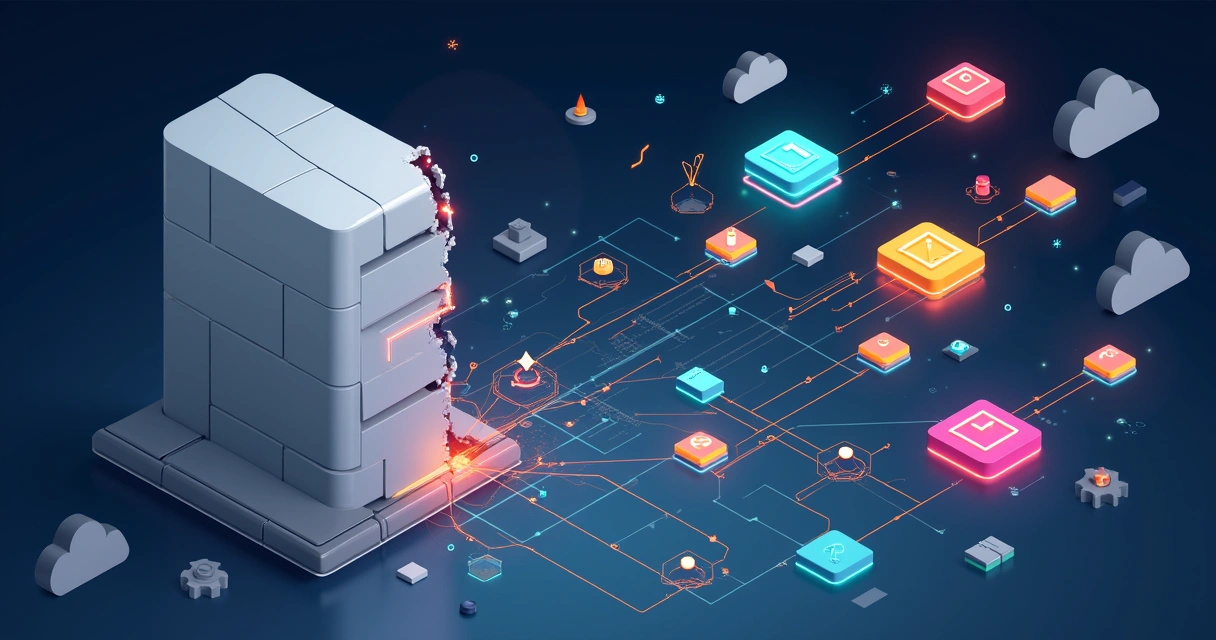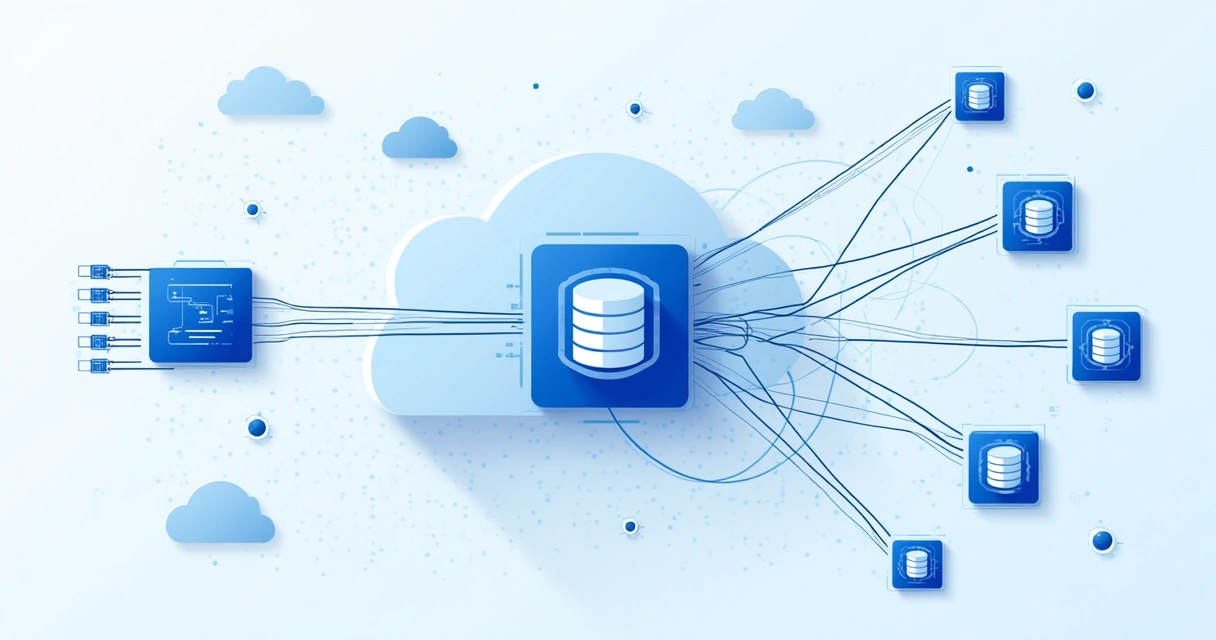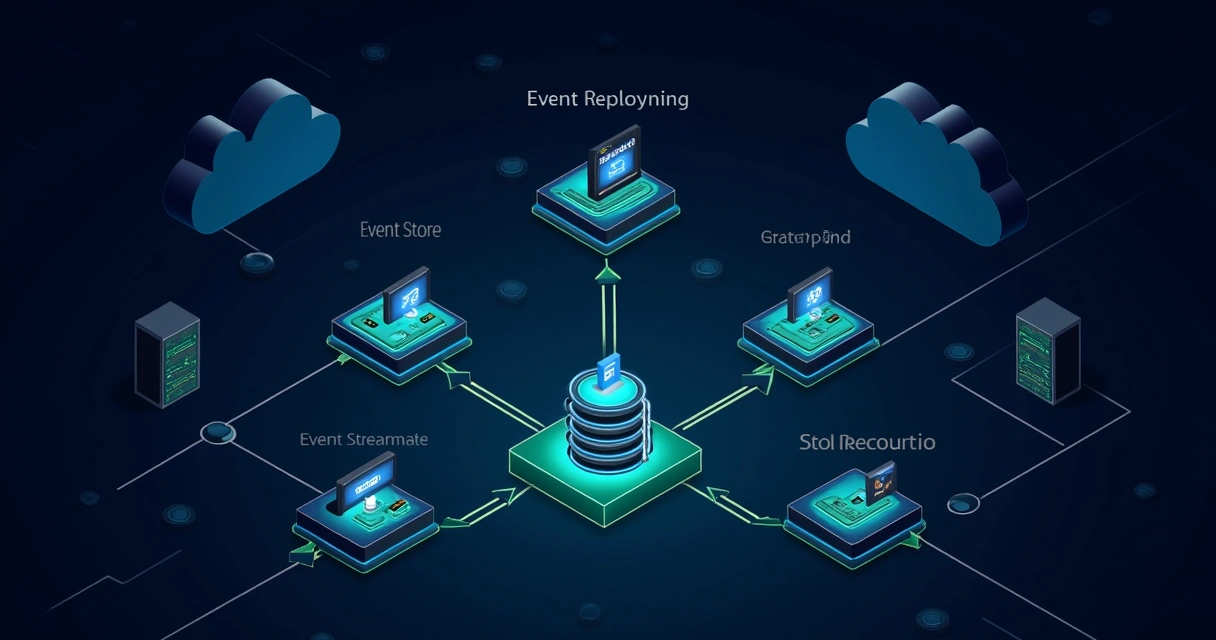There’s something captivating about seeing a team finally pull the trigger on moving from a monolith to microservices. The promise: scalability, faster deployments, and freedom from the spaghetti code monster. It’s easy to imagine success, especially when everyone else seems to be doing it. But is trading in that well-worn monolith for a cluster of shiny new services as straightforward as it sounds?
I’ve seen projects bristle with optimism at the start and wobble with uncertainty halfway through. It’s easy to underestimate the risks until you’re knee-deep in new problems. Sometimes the problems don’t even show up right away.
So let’s bring a little realism to the journey—a story in seven lessons, built from patterns observed on the ground. This article, published here at Arthur Raposo, collects these risks not to discourage, but to prepare. If you get these right, you’ve given yourself a real shot at making microservices work. Miss a few and you might find yourself wishing you’d never left that monolith in the first place.
 Initial complexity and learning curve
Initial complexity and learning curve
At first glance, microservices seem like a collection of smaller, easier parts. But what’s often missed is how much you need to learn just to get started. Every service has its own lifecycle, deployment process, database—even its own build.
- You’ll need to set up CI/CD pipelines for every service.
- Provision and monitor multiple databases and queues.
- Learn new patterns for service discovery, resilience, and versioning.
Many teams greatly underestimate the time it takes to build an initial working foundation. Guides like those on the TatvaSoft blog point out the required upskilling and long lead time before seeing results. If your team is new to distributed systems or cloud paradigms, the early months may feel overwhelming.
Complexity starts the moment you commit the first line.
Operational overhead grows quickly
Once the code is running, operations shift gears. There are multiple services, each with its own deployments and dependencies. This is more than just ‘more things to watch’.
According to research by Ideas2IT, teams must track releases and database migrations per service. It requires tighter process discipline and stronger communication than most are used to in monoliths. Deploying a simple hotfix can turn into a puzzle—what services need to be updated? Did that fix somewhere else break your change?
- Resource allocation per service is non-trivial (memory, CPU, configs).
- Upgrades and rollbacks become tricky, especially if services drift apart in compatibility.
Multiple services multiply responsibility.
Data consistency isn’t a given
Monoliths often rely on direct database calls and transactions for data consistency. With microservices, though, you move to distributed data and eventual consistency. This is where things can get uncomfortable in production.
You may need to use patterns like event sourcing, sagas, or compensating transactions to ensure data integrity. It feels abstract in theory—but when users notice delays or see inconsistent data, it gets painfully concrete. The Ideas2IT summary frames it well: synchronizing data between services can spiral into months of extra work after the initial migration.
It’s not just technical. It’s about trust.
Service communication brings new headaches
Microservices need to talk—sometimes too much. What was once a method call is now an HTTP or messaging request.
- Network failures are real, and retries may not be enough.
- Deciding between synchronous and asynchronous communication isn’t always simple.
- Debugging is slower—tracing a request across services can take hours.
As Java Tech Blog notes, tracking down interactions between microservices and managing their evolution demands a strong investment in monitoring and distributed tracing. The challenge of breaking down old ‘big ball of mud’ code often feels smaller than making sense of dozens of chatty services.
Simple messages aren’t always simple anymore.
DevOps requirements get bigger
If your pipelines, monitoring, and rollout processes aren’t already top-notch, microservices will stretch them. Now you have multiple artifacts, environments, and release trains to think about.
Continuous delivery, rollbacks, and blue-green deployments become daily conversations, not distant goals. Even minor errors in configuration or automation can lead to partial outages or failed deployments affecting only half your services.
The Java Tech Blog highlights just how necessary it is to uplift your DevOps culture and tools before attempting large-scale migrations. Honestly, you need to invest time here before you migrate, not after.
If you skip DevOps, the pain is immediate.
Security is harder and goes deeper
With many services come many doors to guard. In a monolith, you had fewer access points and could usually rely on a firewall and role-based database access. Now every API, queue, and service endpoint is a potential threat surface.
- You need robust identity, authentication, and authorization mechanisms.
- Secrets management must be well-defined and automated.
- Network segmentation, service-to-service encryption, and audit logging matter much more.
The Sonrai Security blog warns against missing these details. A single slip in security can turn a small oversight into a system-wide breach. It’s a constant arms race—a situation Arthur Raposo’s readers often discuss when sharing real war stories from the field.
Security by obscurity won’t work. Not even for a week.
Team and process changes are demanded
Switching to microservices isn’t just about tech—it’s as much about how your team works as what they build. Teams that thrive with monoliths often struggle with the communication, autonomy, and responsibility microservices demand.
- Microservices work best with cross-functional, small teams responsible for both code and operations.
- You’ll need new processes for testing and releasing features across services.
- More meetings may actually be necessary for alignment, not less.
As Java Tech Blog points out, change management and supporting a cultural shift matter as much as the code rewrite itself.
People are always part of the architecture, like it or not.
Costs—technical and financial—can surprise you
The cost of migration is routinely underestimated. Licenses, cloud compute, storage, and developer hours all add up. And then you factor in the downtime, rework, and opportunity costs while the migration is happening. Studies discussed on TatvaSoft reinforce: “The total spend is rarely visible upfront.”
It’s also easy to miss the human and morale costs when teams burn out under hidden complexity and slow progress. Budgets set in the boardroom often break in the server room. Here at Arthur Raposo, we see all the time how accurate risk assessment is rare, and how, frankly, a little pessimism early on can save a project from disaster later.
Migrations cost more than you think. Always.
Conclusion
Pulling a monolith apart takes courage. It also takes honesty about why you’re doing it and what it will cost. Those seven risks have tripped up more than a few well-meaning teams. Sometimes it works out—other times, you can trace months of stress back to an assumption that microservices were a panacea. If your goal is robust, future-proof systems—and you value deep experience—Arthur Raposo is building a space for that kind of practice. Take your time, plan with skepticism, and remember: not every monolith is broken, and not every set of microservices is progress.
Think your architecture could benefit from grounded expertise? Get involved with our community, check out our code, and share your stories. We’re here to raise the bar—one migration (or non-migration) at a time.
Frequently asked questions
What is a monolith in software?
A monolith in software refers to a single, unified application where all features, business logic, and user interactions exist in a single codebase and are deployed as one unit. Think of it as everything in one big box: database access, APIs, front-end, background jobs. Changes affect the whole system, and scaling is typically all-or-nothing. Monoliths are straightforward to start with and are common in the first version of most products.
Why move from monolith to microservices?
Teams move to microservices to break apart large, hard-to-maintain codebases, enabling faster deployments, independent scaling, and experimenting with different technologies. It can open the door for better reliability and agility, especially as systems grow. However, these benefits often come with trade-offs. Teams at Arthur Raposo see that success is more likely when pain points in the monolith (such as build times, slow releases, or clashing team priorities) cannot be fixed any other way.
What are the main risks to consider?
The main risks when shifting to microservices include higher operational and monitoring complexity, service communication issues, data consistency challenges, increased DevOps and security demands, team changes, and unexpected costs. As seen in studies from Ideas2IT and Java Tech Blog, not addressing these risks can lead to slowdowns and instability, sometimes worse than what you started with.
Is switching to microservices worth it?
It really depends. For organizations struggling with scaling, quick releases, or tangled legacy code, the benefits may be clear. But if your main problems are elsewhere—like unclear requirements, lack of testing, or team misalignment—microservices can make things worse. Many in the Arthur Raposo community believe in a case-by-case approach. Microservices are not always the answer; sometimes, a well-structured monolith is smarter.
How to minimize microservices migration risks?
You can reduce risks by planning carefully, investing in DevOps and monitoring tools early, breaking migrations into small steps, and setting clear business goals. Adopt patterns for reliable inter-service communication and data consistency. Allocate budget and time for upskilling and cultural shifts. Resources like the Java Tech Blog suggest regular checkpoints and incremental transitions to avoid giant leaps that are harder to revert. And finally, talk honestly about the risks, both technical and organizational, from day one.



 Initial complexity and learning curve
Initial complexity and learning curve
Leave A Comment